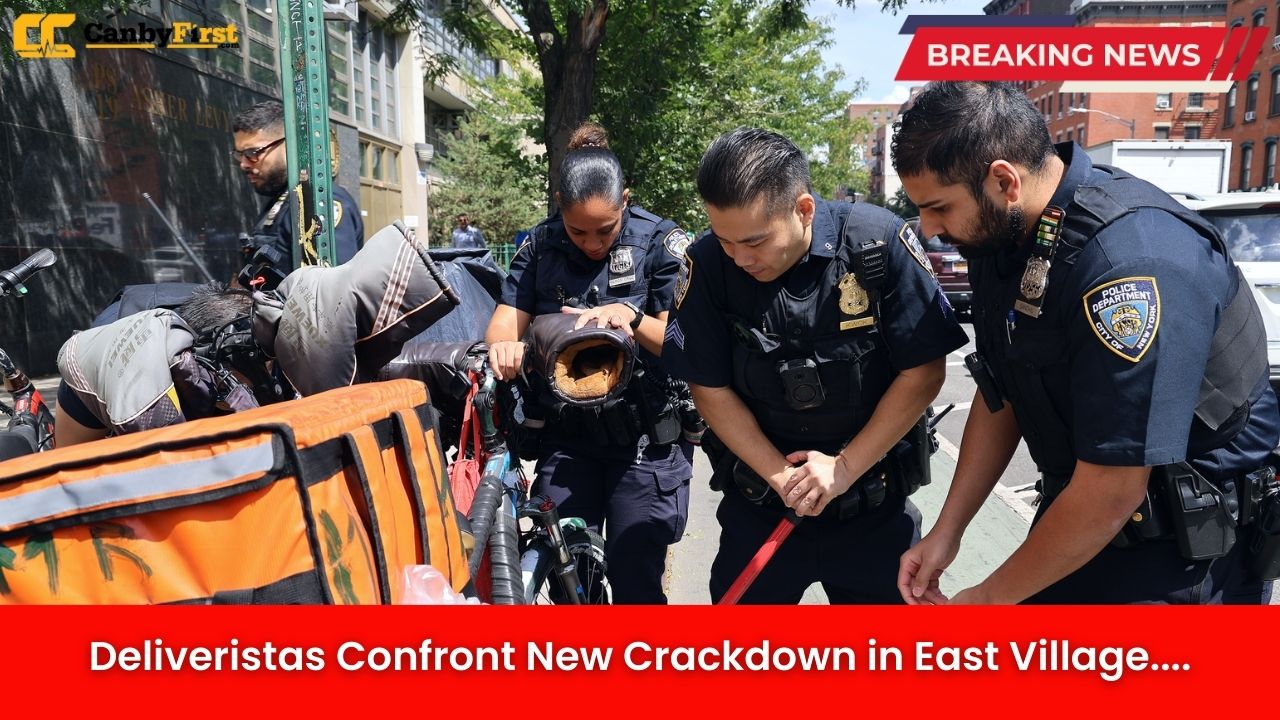New York, US: Tension is rising in Manhattan’s East Village as delivery workers—widely known as deliveristas—face a new wave of city enforcement measures aimed at addressing traffic, safety, and licensing concerns. The recent push has sparked debate over worker protections, community safety, and the growing pressures of gig economy labor in one of New York City’s busiest neighborhoods.
Increased Enforcement on Streets
Beginning this week, city agencies have ramped up patrols targeting e-bike violations, sidewalk riding, and unlicensed delivery operations within the East Village. Officials argue that the increased enforcement is necessary due to an uptick in pedestrian complaints and safety hazards caused by fast-moving delivery bicycles and mopeds navigating sidewalks and crowded intersections.
According to local residents, the sight of e-bikes weaving through traffic has become a daily norm, raising concerns over pedestrian safety. Enforcement officers were seen stopping delivery workers on popular avenues such as Avenue A and East 14th Street, issuing tickets for traffic violations, checking for proper vehicle registration, and in some cases impounding bikes.
Also Read
Deliveristas Push Back
For the vast community of delivery workers—many of whom are immigrants—these measures feel like a direct blow to their livelihoods. Deliveristas argue that they are being unfairly targeted while simultaneously serving as an essential part of New York City’s economy, particularly after sustaining neighborhoods throughout the pandemic when dining rooms remained shuttered.
“This isn’t just about bikes. It’s about survival,” said one delivery worker, noting that fines and impoundments can set them back weeks of earnings. Many workers also argue that the city should provide clearer guidelines and safe infrastructure, rather than punishing riders who are required to meet strict delivery deadlines from app-based platforms.
Small Businesses and Residents Divided
Local business owners appear to be split on the enforcement. Some restaurants support the city’s actions, claiming that reckless riding creates liability issues and drives away pedestrian customers. Others, particularly those relying heavily on delivery orders, worry that stricter policing will disrupt their operations and slow service times.
Meanwhile, East Village residents are also divided. Some welcome the push, citing fears of near-collisions on sidewalks. Others sympathize with the workers, criticizing city officials for penalizing vulnerable laborers instead of regulating larger delivery platforms that set the pace and pay rates.
Broader Context of Gig Work
The East Village enforcement comes at a time of continued friction between delivery workers and city regulators across New York. Earlier this year, gig economy debates intensified as workers called for higher minimum pay standards, access to restrooms, and safe transportation infrastructure.
Advocates insist that the latest enforcement ramp-up is misplaced. They argue that cracking down on delivery workers without addressing app companies’ business models leaves the root problem—unrealistic delivery timelines and lack of support—untouched.
City’s Position
Officials maintain that the enforcement efforts are designed to protect both pedestrians and workers. “Safety has to come first,” a spokesperson for the city stated, emphasizing that while delivery workers are critical to local commerce, compliance with traffic and licensing laws cannot be overlooked.
The city has also pledged to expand bike lane access and strengthen infrastructure for cyclists, though workers argue progress has been slow and inconsistent, particularly in congested neighborhoods like the East Village.
What Lies Ahead
As enforcement continues, deliveristas, labor organizers, and advocacy groups are vowing to fight back, planning rallies and community meetings to push for fairer treatment and systemic change. Discussions around worker protections, traffic safety, and platform accountability are likely to intensify in the coming weeks, with the East Village emerging as a flashpoint for the broader battle over the future of gig work in New York City.
For now, the streets remain tense: delivery workers pedal on under heightened scrutiny, residents brace for the effects on their neighborhood routines, and city officials weigh the balance between order and livelihood in one of Manhattan’s most densely packed districts.












